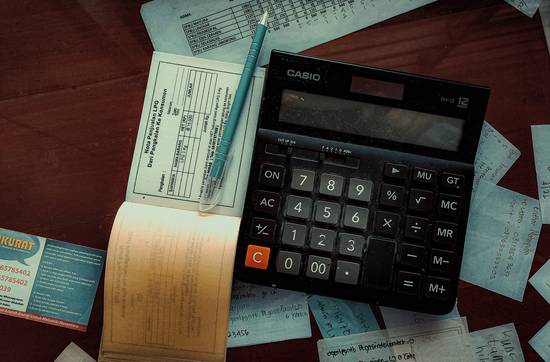RRSP vs TFSA: The Ultimate Canadian Comparison Guide (2025)
Choosing between a Registered Retirement Savings Plan (RRSP) and a Tax-Free Savings Account (TFSA) is one of the most important decisions Canadians make for retirement planning and tax efficiency. Both accounts offer powerful tax advantages, but serve different purposes, have different withdrawal rules, and are best suited for different goals. This in-depth guide breaks down RRSP vs TFSA—including tax treatment, contribution limits, withdrawal impacts, and strategic planning tips for 2025 and beyond.
- What’s Covered: RRSP & TFSA rules, tax advantages, contribution limits, withdrawals, and real-world planning strategies
- Who’s This For? Canadians saving for retirement, a home, education, or general wealth-building
- Quick Links: Side-by-Side Table, Tax Treatment, Withdrawals, Contribution Limits, Strategy

RRSP vs TFSA: Quick Comparison Table
| RRSP | TFSA | |
|---|---|---|
| Tax on Contributions | Tax-deductible (reduces taxable income) | Not tax-deductible |
| Tax on Withdrawals | Fully taxed as income (unless special program) | Tax-free |
| Tax on Growth/Investment Income | Tax-deferred | Tax-free |
| Contribution Limit (2025) | 18% of previous year’s earned income, up to $31,560 (plus unused room) | $7,000 (annual), plus unused room since 2009 (see below) |
| Contribution Age Limit | End of year you turn 71 | No age limit (18+, must have valid SIN) |
| Best For | Retirement savings, high-income earners, deferring tax until retirement | Short- and long-term savings, flexible goals, low/moderate-income earners |
| Withdrawal Penalties | Taxed as income; permanent loss of room (except HBP/Lifelong Learning) | No tax; contribution room restored next year |
| Impact on Benefits (GIS, OAS, etc.) | Withdrawals count as income—may reduce benefits | No impact—withdrawals are not income |
*Limits and rules current for 2025. Always check CRA RRSP and CRA TFSA for updates.
Tax Treatment: How RRSP and TFSA Save You Money
RRSP: Tax Deferral
- Contributions are tax-deductible: they reduce your taxable income for the year you contribute, often resulting in a tax refund.
- Growth (interest, dividends, capital gains) is tax-sheltered while funds remain in the RRSP.
- Withdrawals are fully taxed as regular income at your marginal tax rate—unless using the Home Buyers' Plan or Lifelong Learning Plan.
- Best suited for years when your tax rate is high while contributing and expected to be lower in retirement.
TFSA: Tax-Free Growth
- Contributions are not tax-deductible: no tax refund up front.
- All growth (interest, dividends, capital gains) is completely tax-free, forever—even when withdrawn.
- Withdrawals are not taxed and do not count as income for government benefits.
- Flexible for both short-term and long-term goals—emergency fund, car, house, retirement, or investments.
Withdrawals: Rules, Impacts & Strategies
RRSP Withdrawals
- Any withdrawal (except for HBP/LLP) is fully taxable as income in the year taken out.
- Withholding tax applies at source: 10%-30% depending on the amount and province.
- Withdrawn amounts do not restore your contribution room—once out, that room is lost forever.
- Special programs:
- Home Buyers’ Plan (HBP): Withdraw up to $35,000 to buy your first home, tax-free if repaid within 15 years.
- Lifelong Learning Plan (LLP): Withdraw up to $10,000/year ($20,000 total) for education, tax-free if repaid within 10 years.
- RRSP must be collapsed by December 31 of the year you turn 71 (convert to RRIF or annuity).
TFSA Withdrawals
- Withdrawals are completely tax-free and can be made anytime, for any reason.
- Withdrawn amounts restore your contribution room—but only in the following calendar year.
- No impact on eligibility for government benefits (e.g., OAS, GIS, child benefits).
- Ideal for emergency funds, big purchases, or supplemental retirement income.
Contribution Limits: RRSP & TFSA in 2025
RRSP Contribution Limit
- 18% of previous year’s earned income up to a maximum of $31,560 (for 2024 contributions claimed on 2024 tax return; 2025 limit TBA).
- Unused room carries forward indefinitely. Check your CRA My Account for your personal limit.
- Contributions made within the first 60 days of the year can be applied to the previous year’s return.
TFSA Contribution Limit
- $7,000 for 2024 (2025 limit TBA), regardless of income.
- Unused room accumulates every year since you turned 18 (and had a valid SIN) after 2009, even if you didn’t file taxes or open an account.
- Total lifetime limit (as of 2024): $95,000 (if eligible since 2009).
- Withdrawals restore contribution room the following year.
RRSP or TFSA? Planning Strategies for Canadians
- High-Income Years: Prioritize RRSP contributions to maximize your tax deduction when your marginal tax rate is highest. Withdraw in retirement when your rate is lower.
- Low/Moderate-Income or Young Adults: TFSA is often preferable, as you get tax-free growth and withdrawals won’t impact benefits like GIS or OAS in the future.
- Dual Approach: Many Canadians benefit by using both. TFSA for emergency fund and medium-term savings; RRSP for long-term retirement and major tax-deferral.
- Home Buyers or Students: Use RRSP for HBP/LLP withdrawals, then replenish with TFSA savings.
- Variable Income (self-employed, commission, gig): Save in a TFSA, then transfer a lump sum to your RRSP in a high-income year for a larger deduction.
- Seniors (age 71+): You can keep contributing to a TFSA even after you must close your RRSP.
Pro Tip: RRSP withdrawals are counted as income and may reduce income-tested benefits (OAS, GIS, provincial credits). TFSA withdrawals are ignored for benefits and can be a powerful tool for low-income seniors.
Frequently Asked Questions: RRSP vs TFSA
Related Guides & Resources
- Canada-Wide Individual Tax Credits
- Capital Gains Taxation in Canada
- Canadian Home Buyers Incentives
- Tuition & Education Tax Credits
- Disability Tax Credit Guide
- Climate Action Incentives
Province-specific tax break guides: Ontario | BC | Quebec | Alberta